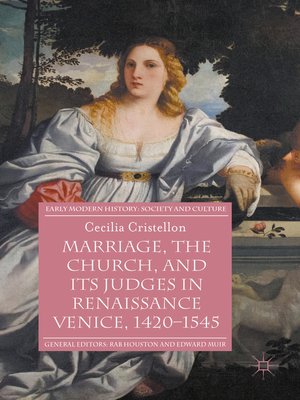Marriage, the Church, and its Judges in Renaissance Venice, 1420-1545
ebook ∣ Early Modern History: Society and Culture
By Cecilia Cristellon

Sign up to save your library
With an OverDrive account, you can save your favorite libraries for at-a-glance information about availability. Find out more about OverDrive accounts.
Find this title in Libby, the library reading app by OverDrive.



Search for a digital library with this title
Title found at these libraries:
| Library Name | Distance |
|---|---|
| Loading... |
This book investigates the actions of marriage tribunals by analyzing the richest source of marriage suits extant in Italy, those of the Venetian ecclesiastical tribunal, between 1420 and the opening of the Council of Trent. It offers a strongly representative overview of the changes the Council introduced to centuries-old marriage practices, relegating it to the realm of marginality and deviance and nearly erasing the memory of it altogether. From the eleventh century onward, the Church assured itself of a jurisdictional monopoly over the matter of marriage, operating both in concert and in conflict with secular authorities by virtue of marriage's civil consequences, the first of which regarded the legitimacy of children. Secular tribunals were responsible for patrimonial matters between spouses, though the Church at times inserted itself into these matters either directly, by substituting itself for the secular authority, or indirectly, by influencing Rulings through their own sentences. Lay magistratures, for their part, somewhat eroded the authority of ecclesiastical tribunals by continuing to exercise autonomous jurisdiction over marriage, especially regarding separation and crimes strictly connected to the nuptial bond and its definition, including adultery, bigamy, and rape.







